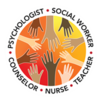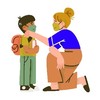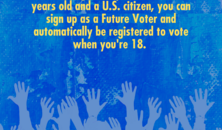Student Mental Health Crisis Facts
02/15/2022
Back to Blog
 Contact your legislators today about student mental health supports.
Contact your legislators today about student mental health supports.
Remember, your stories are more convincing than statistics. Use these numbers to back up stories you can share from your experience with students.
Increasing mental, behavioral, and developmental disorder rates in US Children
- 1 in 6 U.S. children aged 2–8 years (17.4%) had a diagnosed mental, behavioral, or developmental disorder (MBDD). Approximately 1 in 5 (20%) adolescents in the U.S. have been diagnosed with an MBDD.
- Trauma affects between half and twoâ€thirds of all U.S. children. These adverse childhood experiences (ACEs), such as maltreatment, exposure to violence, and/or substance abuse impact a child’s mental health and can predict poor mental health across the lifespan.
- Nationally, emergency visits for mental health issues jumped by 31% among 12- to 17-year-olds during the pandemic.
 Seattle Children’s Hospital emergency department saw a more than threefold increase in children and adolescents presenting with psychiatric emergencies.
Seattle Children’s Hospital emergency department saw a more than threefold increase in children and adolescents presenting with psychiatric emergencies.- Sacred Heart Children’s Hospital in Spokane reported acute care admissions increases of 73% to its inpatient adolescent psychiatric unit and 68% to its general pediatric floor for behavioral health issues.
- Swedish Medical Center reported a nearly than 200% increase of pediatric inpatient admissions for behavioral health reasons and/or suicide attempts from 2019 to 2020.
Growing rates of depression, anxiety among US children
- Children and teens are reporting increasing incidences of hopelessness, anxiety, and suicidal thoughts. These concerns disproportionately affect students of color, who are also less likely to report that they have an adult supporting them or that they are hopeful about the future.
- Anxiety disorders among children and teens increased by 20% between 2007 and 2012.
- Major depressive disorders in U.S. adolescents increased from 8.7% in 2005 to 11.3% in 2014.
- 30% of U.S. adolescents have felt so sad or hopeless that they stopped doing usual activities.
- In 2020, Washington pediatricians reported:
- Significant increases in youth with eating disorders, anxiety, mood disorders, and depression with
 suicidal thoughts and self-harm behaviors (nearly twice the rate of adults over 40).
suicidal thoughts and self-harm behaviors (nearly twice the rate of adults over 40). - Significant numbers of previously stable youth have experienced new-onset or exacerbated eating disorders, depression, or anxiety.
- Significant increases in youth with eating disorders, anxiety, mood disorders, and depression with
- Suicide rates have also increased among people ages 10 to 24, from 6.8 per 100,000 people in 2007 to 10.6 per 100,000 in 2017, according to the CDC.
- Suicidal thoughts among Washington students are up from 35% in 2008 to 39% in 2018.
Addressing the needs of communities of color
- Students of color and students experiencing poverty faced more stressors during the pandemic.
- Nationally, the caregivers of more than 120,000 youth died during the first 15 months of the pandemic with disproportionate losses experienced by students of color.
- Access to treatment varies by community, with students experiencing poverty and students of color facing greater barriers to access.
- Studies have shown access to culturally responsive school mental health services help students feel welcome, stay connected, remain safe and to thrive academically.
Recognizing the role schools play in this crisis
- Less than half of students experiencing mental health issues such as depression and anxiety receive any
 treatment. Nearly 2/3 of those who received treatment did so in their schools. In 2018, nearly 3.5 million adolescents received mental health services in education settings.
treatment. Nearly 2/3 of those who received treatment did so in their schools. In 2018, nearly 3.5 million adolescents received mental health services in education settings. - Adolescents with public insurance, from lowâ€income households, and from marginalized racial and ethnic groups, were more likely to only access services in an educational setting.
- In many large, urban schools well-over 50% of their students manifest significant behavior, learning, and emotional problems. Poverty, racial injustice, and a lack of hope for future opportunities are connected to the development and increasingly severity of these issues.
- High school students with depression are 2 times more likely to drop out.
Improving staffing to address this mental health crisis
- Washington remains far short of the staffing recommendations for school nurses, school psychologists, social workers, and counselors. Washington schools employ 1,100-1,200 school psychologists, or one for every 1,000 students, far below national recommendations of one to 500-700 students.
- COVID-19 has significantly disrupted supports and increased concerns for K–12 students.
- Nationwide, 23% of students attended schools with no psychologists and 53% attended schools with no social workers.
Posted in: Blog Entries | Actions
Back to Blog


